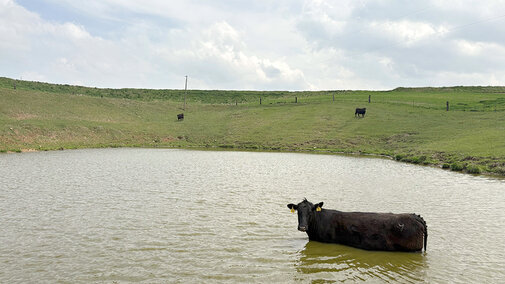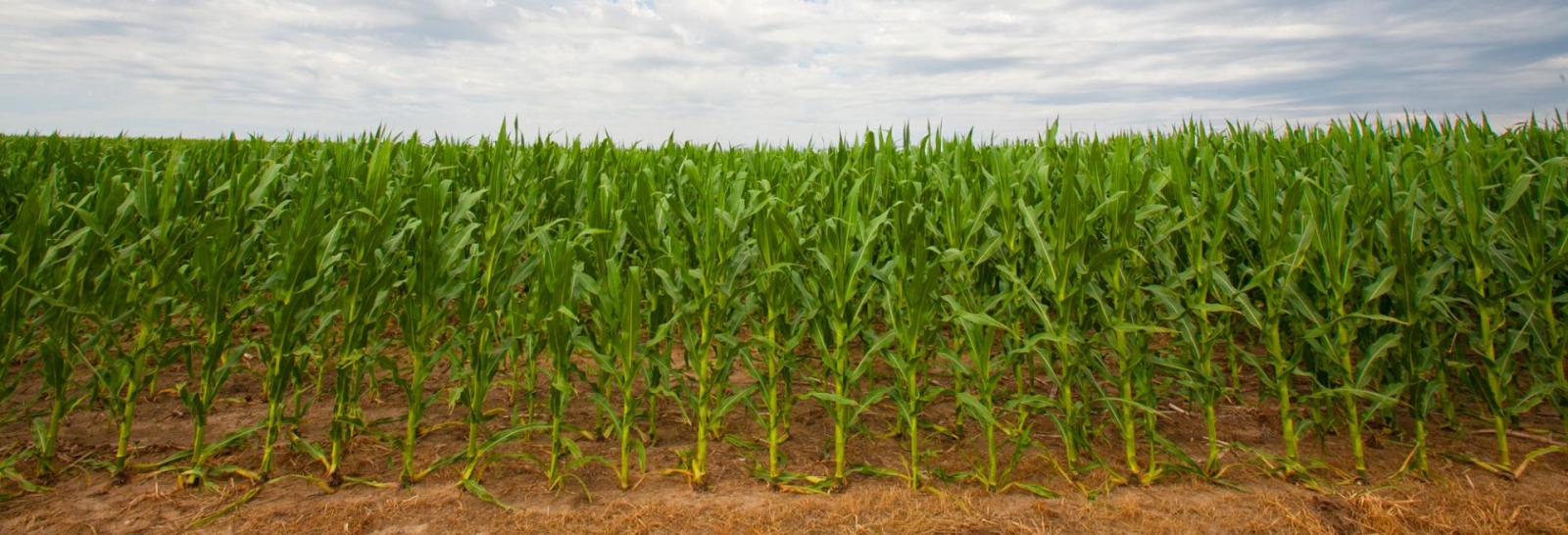Grazing With the Weather
Precipitation and temperature play major roles in pasture productivity, and knowing how to adjust grazing to match current conditions is key. Are you shifting your management to meet pasture conditions?
Stocking and grazing management are not static things. When production is limited, especially during a drought period, stretching forage resources is a high priority. In contrast, during wet years, grass growth can get ahead of our grazing rotation and lose quality.
By this point in the year, our pastures have produced the vast majority of forage that we will get. Using temporary electric fence to cross fence can increase utilization, slowing down a grazing rotation and stretching forage considerably during dry weather.
This is especially true when plants become dormant due to lack of precipitation or heat. Typically, utilization seeks to balance animal demand and plant health, but taking more of a dormant plant without damaging the crown has little impact on overall plant health.
On the flip side, grass that is getting tall and lanky ahead of a grazing rotation could benefit from flash grazing. Moving animals on and off quick can help keep plants from getting overly mature. Keep up this fast pace while growth is rapid. Once growth slows, then the rotation can slow down as well.
Speeding up grazing when things are wet and slowing down during dry times is a good rule of thumb to use as we adjust to the weather Mother Nature throws our way. Doing so can help you find the perfect balance for your pasture and animal health.
Water Quality and Blue-green Algae
When cattle are on pasture, both forage and water quality are important for healthy animals. Surface water is particularly prone to quality issues, such as blue-green algae, salinity, mineral concentrations or nitrate.
Several factors can cause livestock water to be less than ideal for quality, which can impact animal productivity and health. While not common in Nebraska, salinity or minerals can cause animals to limit or refuse consumption in some locations. In some circumstances, concentrations can become high enough to be toxic. Dissolved salt and mineral concentrations increase with dry conditions as water evaporates.
Another issue more common in Nebraska surface water is high nitrates. While elevated nitrates from groundwater sources feeding a pond may be a cause, more common is runoff from other sources of nitrate contamination. Cattle can deal with nitrate levels in water that are unsafe for human consumption, but the real danger comes from elevated nitrate levels in water coupled with feed sources that are also high in nitrates. The compounding effect can push a borderline ration into toxic levels or accelerate nitrate toxicity that is already occurring.
Blue-green algae is a very common occurrence in still water during the summer months. If the conditions are right, a bloom of growth can occur quickly, contaminating the water. Consumption can kill livestock within 24 hours. Algae blooms have traditionally been treated with copper sulfate following proper instructions for rates and exclusions. However, when blooms become more frequent, repeated copper treatments can cause a buildup of the element in the environment and animal management becomes our preferred response.
Assuring water is good quality will go a long way toward making summer grazing better and healthier cattle.
Stable Fly Management in Pastures
Despite their name, stable flies can be a significant annoyance and cause economic losses in pastured cattle, not just those confined in feedlots and dairies. With the recent moisture much of Nebraska has received, conditions are favorable for significant stable fly numbers.
The stable fly is similar in size to a house fly but is dark gray with irregular dark spots on the abdomen. The proboscis, or mouthpart, sticks out from the head bayonet-style. Both sexes require a blood meal, generally twice a day, and feed on the legs and belly of cattle. As few as 4 flies per leg can cause economic losses stemming from reduced average daily gain. After feeding, stable flies will seek out a shaded resting area in windbreaks, on windmill towers, or near water tanks.
Signs of a stable fly infestation will be seen in various cattle behaviors that include tail flicking, skin twitching, leg stamping and standing in water. Cattle may also bunch together in pasture corners, which may damage forage and could cause blowouts on fragile soils.
The most common treatment option is an animal spray such as Co-Ral, Prolate, or products containing permethrin or natural pyrethrins. These products can be applied using a low pressure or mist blower sprayer. Other options include targeting stable fly resting sites while avoiding water tanks and other water sources, or reducing larval development by cleaning spillage and waste around hay rings or using a larvicide (Neporex®).

